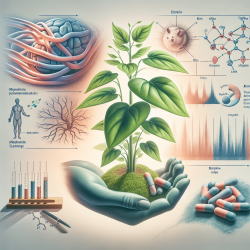Understanding Rett Syndrome: A Pathway to Effective Therapies
Rett syndrome (RTT) is a rare neurodevelopmental disorder primarily affecting females, with symptoms manifesting between 6 and 18 months of age. This disorder, caused by mutations in the MECP2 gene, presents significant challenges due to its complex nature and variability in symptoms. However, recent research advancements have opened new avenues for understanding and treating RTT, offering hope for practitioners and families alike.
The Role of Mouse Models in RTT Research
Mouse models have been instrumental in RTT research, providing insights into the disorder's mechanisms and potential therapeutic targets. These models mimic key RTT symptoms, such as motor impairments and neurological deficits, allowing researchers to explore the effects of MECP2 mutations and test therapeutic interventions. The research article "Treating Rett syndrome: from mouse models to human therapies" highlights the critical role of these models in advancing our understanding of RTT.
Implementing Research Outcomes in Practice
Practitioners can enhance their therapeutic strategies by integrating findings from RTT research. Here are some actionable insights:
- Precision Medicine: Recognize the importance of individualized treatment plans. Since RTT symptoms vary widely, tailoring interventions based on specific genetic mutations and patient characteristics can improve outcomes.
- Combination Therapies: Given the complexity of RTT, a combination of therapies targeting different symptoms and pathways may be necessary. This approach can address the disorder's multifaceted nature, improving overall patient well-being.
- Early Intervention: Emphasize the significance of early diagnosis and intervention. Early therapeutic measures can mitigate symptom progression and enhance developmental outcomes.
Encouraging Further Research
While current research has provided valuable insights, there is still much to learn about RTT. Practitioners are encouraged to stay informed about ongoing studies and consider participating in research initiatives. Collaboration between researchers and clinicians can accelerate the development of effective therapies and improve the quality of life for individuals with RTT.
Conclusion
Rett syndrome remains a challenging disorder, but the progress made through mouse model research offers a promising path forward. By implementing research outcomes and engaging in further studies, practitioners can play a crucial role in advancing RTT therapies. For those interested in delving deeper into the research, the original paper "Treating Rett syndrome: from mouse models to human therapies" provides comprehensive insights. Read the original research paper here.










